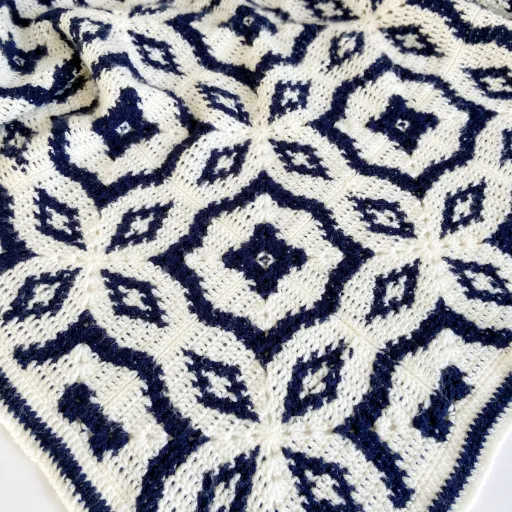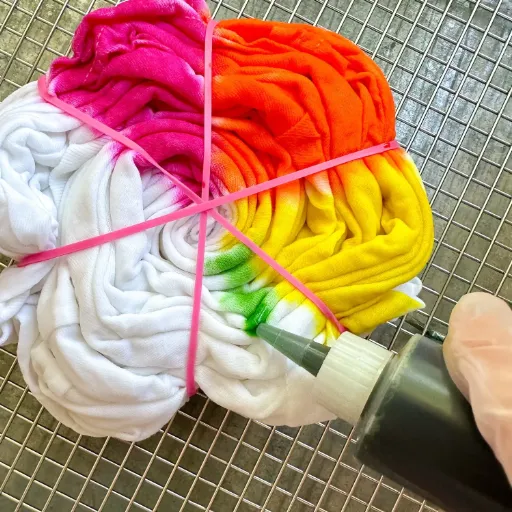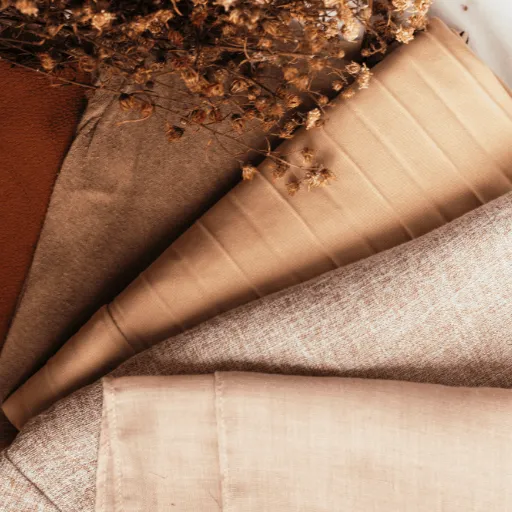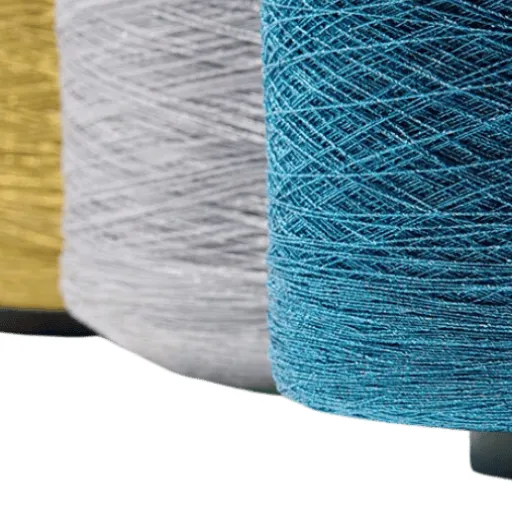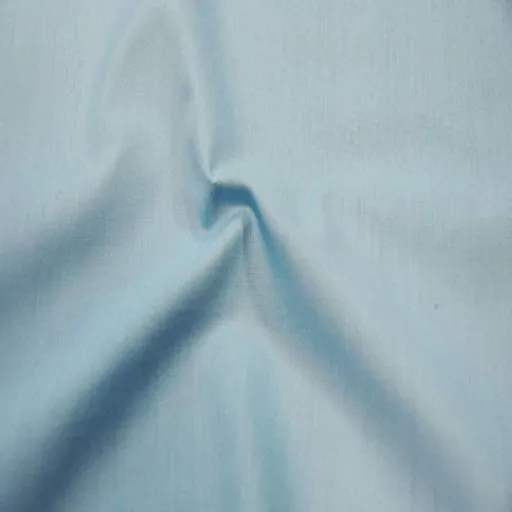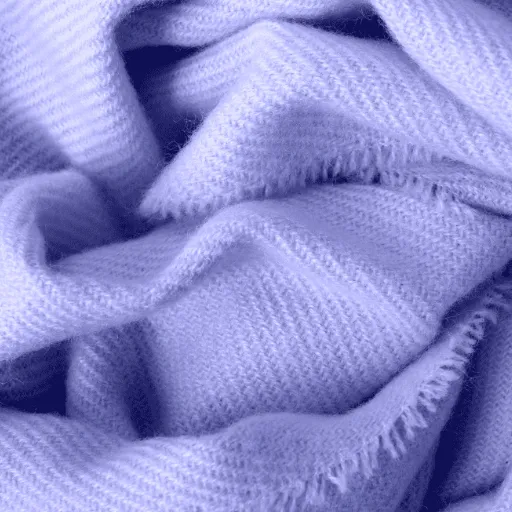When it comes to the materials in baby blankets and clothes, safety and comfort are the two primary concerns on the mind of every parent. Because acrylic yarn is cost-effective, displays a myriad of colors, and is soft, it is considered an excellent option; however, is it safe for your little one? Many parents and caregivers wonder if acrylic yarn, a synthetic fiber-based material, meets the quality and safety criteria necessary for a baby’s delicate skin. This article will talk about what acrylic yarn is, its advantages and disadvantages, and factors you must consider when working with acrylic yarn for babies. By now, you will have formed a definite opinion concerning whether acrylic yarn will do for your precious bundle of joy.
Introduction to Acrylic Yarn
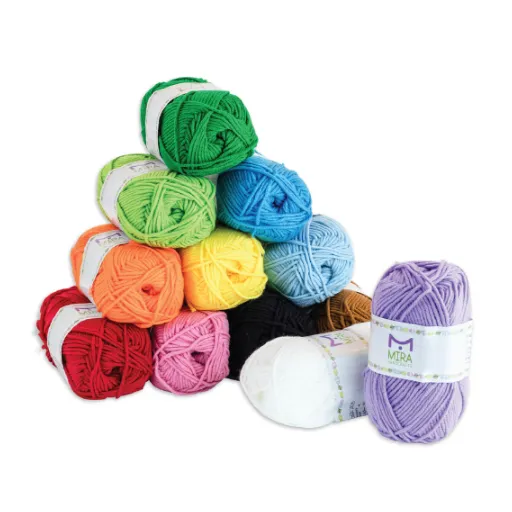
Polymers classify acrylic yarn as a synthetic fiber meant to simulate the softness and versatility of natural fibers, such as wool. It is lightweight yet heavy-duty, and on many occasions, it is more cost-effective than natural substitutes. Notably, it resists mold, mildew, and bugs, making it a low-maintenance option. The myriad features of acrylic yarn, including its diverse colors and textures, make it an admired choice for crafting a wide array of items, such as baby clothes and blankets.
What is Acrylic Yarn?
Acrylic yarn is a synthetic fiber that comes from the polymer called polyacrylonitrile. It undergoes a chemical process in which the polymer is spun into fibers, making it very affordable and adaptable. Acrylic yarn is recognized for its softness and light texture. It is often used as a substitute for natural fibers, such as wool. Due to its durability, resistance to wear, colorfastness, and high demand, it is very popular among crafters and manufacturers. It suits all kinds of knitting, crocheting, and weaving applications for making garments such as sweaters, scarves, blankets, and hats. Besides its price advantage and hypoallergenic nature, the yarn is also sought after by them for top-grade materials suitable for many DIY projects.
Growing Popularity of Acrylic Yarn
This growing trend in the popularity of acrylic yarn is also evident in search engine trends. Searches for acrylic yarn have gone up steadily for the past few years, with such queries as “best acrylic yarn for beginners” and “cheap yarn options” ranking at the top. Such queries suggest that more people are taking up textile arts as a hobby and are drawn to the dependable physical nature and affordability of acrylic yarn. This interest can also be attributed to the availability of online tutorials and crafters’ communities that motivate beginners to explore materials like acrylic yarn for their particular projects.
Central Question: Is Acrylic Yarn Safe for Babies?
Key Safety Information: Generally, the consensus is that acrylic yarns are suitable for use with babies; however, there are some scenarios worth considering. The major pluses acrylic yarn has are alternatives to cheaper prices, easy maintenance, and wearability, sharpening its position for baby clothes and blankets. Since it is synthetic, acrylic yarn may not be as breathable as natural fibers, which could be a concern for babies with sensitive skin or allergies. For guaranteed safety and comfort, it is essential to choose soft acrylic yarns specifically designed for babies, labeled as hypoallergenic and free from harmful chemicals. One should always read the product description and clean the items before use to minimize the possibility of a skin reaction.
Properties of Acrylic Yarn

- Durability: Acrylic yarns exhibit considerable durability and wear resistance, making them truly suitable for extended-life projects.
- Lightweight: Being lightweight, the texture cum comfort are felt in the sense of garments or blankets.
- Ease of Care: Acrylic yarns are machine washable and require minimal upkeep, making them suitable for everyday use.
- Wide Color Variety: These come in bright hues that typically resist fading after use.
- Affordability: It is often more affordable compared to natural fibers like wool or cotton.
- Warmth: Being synthetic, it retains warmth, making it preferable for winter use.
Softness and Durability
The acrylic yarn strikes a compromise between softness and durability, and hence many artisans prefer it for their craft activities. Modern manufacturing techniques have altered its structure, granting it a much softer feel. It is not as innately soft as some luxury fibers, like cashmere, but it can still provide comfort to garments and blankets. On the other hand, acrylic yarns are characterized by excellent durability, which is evident in their synthetic composition that renders them resistant to wear and tear, making them suitable for the construction of very durable articles. Over time, it will maintain its shape relatively well and is less susceptible to shrinkage and stretching when compared to natural fibers; therefore, the fiber is made for everyday use and heavy-duty projects.
Affordability Compared to Natural Fibers
Acrylic yarn, on the other hand, is vastly more cost-efficient than many natural fibers such as wool, cotton, or cashmere. This mass-producible synthetic option is more cost-effective than its natural counterpart, making it an economically sound choice for those on a tight budget, whether crafters or manufacturers. Natural fibers often command a hefty price, as their availability is limited and harvesting is an arduous process. However, acrylics are readily available and offer a fair-priced substitute that, in a way, fulfills many of the same functions. The price range is particularly suitable for bulk projects or beginners in the knitting and crocheting world.
Machine-Washable and Easy to Maintain
The stand-out feature of acrylic yarn is its low-maintenance property. Just like some animal fibers that require special attention, this fiber generally won’t mind being washed in a machine and might even prefer to be tumble-dried, making it a handy option for frequently used articles. For instance, a blanket, a sweater, or a scarf would need acrylic fibers so they may be put through a cycle in the washer. Such easy-to-wash qualities align well with the fast-paced lives of the modern age. Over time, yarn manufacturers have developed and improved acrylic yarn, making it both visually appealing and comfortable to use, even after it has undergone numerous washes and extended use. The fact remains that acrylic yarns can be a handy and uncomplicated choice for anyone willing to work with them.
Potential Safety Concerns

Important Safety Note: Synthetic acrylic yarns are versatile, but they also pose specific safety considerations. Being synthetic polymers, they are flammable and prone to melting under high temperatures; hence, items made of acrylic yarn may not be the best in places that deal with open fires or extreme heat sources. Moreover, the production of acrylic fibers may involve chemical compounds, which can cause sensitivity in individuals who are allergic or otherwise sensitive to these substances. One must always handle acrylic products with care and follow the care instructions to minimize any potential hazards that may arise.
Chemical Composition and Skin Irritation
Acrylic fibers consist mainly of polyacrylonitrile, a synthetic fiber that is derived from petroleum-based chemicals. In production, additives can protect the fiber from factors such as loss of flexibility with age, retention of color, weatherability, or flame retardancy. Such additives, as well as processing chemicals in shallower layers of fibers, may occasionally present irritants to the skin of sensitive persons. Some studies have suggested that individuals with a preexisting skin condition, such as eczema, are more prone to irritation upon direct skin contact with acrylic. Washing the textile before use is considered one way to diminish the effects, as it reduces the presence of residual chemicals and makes it more comfortable when worn. Individuals with higher sensitivity may consider natural fibers or hypoallergenic materials as alternatives.
Breathability and Overheating Risks
Acrylic fabric is lightweight and soft, but it possesses less breathability compared to natural fibers, such as wool or cotton. Being synthetic, acrylic presents challenges in regulating body temperature, as the fabric tends to retain heat and moisture. This lack of breathability may cause discomfort, especially in warmer weather or during physical exertion, where overheating would become a concern. For people who tend to sweat excessively or are sensitive to heat, opting for fabrics engineered with moisture-wicking or ventilation in mind may prove to be more comfortable and performant.
Flammability of Acrylic Yarn
Acrylic yarn is a more flammable variety of fiber compared to natural fibers, such as wool or cotton. A significant hazard associated with this synthetic nature is its tendency to melt and burn at lower temperatures. When acrylic yarn catches fire, it can release toxic fumes, including hazardous chemicals, hydrogen cyanide, and carbon monoxide, which pose significant health risks to humans. Hence, one must take great care when directing the catalytic work with acrylic yarn, as it may come into contact with a fire source or heat exposure. Prevention can be achieved through the use of appropriate flame-resistant treatment or by blending the acrylic with less flammable materials.
Skin Sensitivity and Allergies
Since it is a synthetic material, acrylic yarn can create skin sensitivity and allergic reactions in some people. Itching, redness, or mild irritation is widespread and may worsen with prolonged exposure. It also traps heat and moisture due to the synthetic fiber, which can worsen conditions on already sensitive skin. For individuals with allergies, it is best to consider a hypoallergenic alternative in natural fibers, such as cotton, bamboo, or wool, that is responsibly processed. Conducting a patch test of the material on a small area of skin, such as a fold, before extensive use may also be beneficial.
Practical Advice for Parents and Caregivers
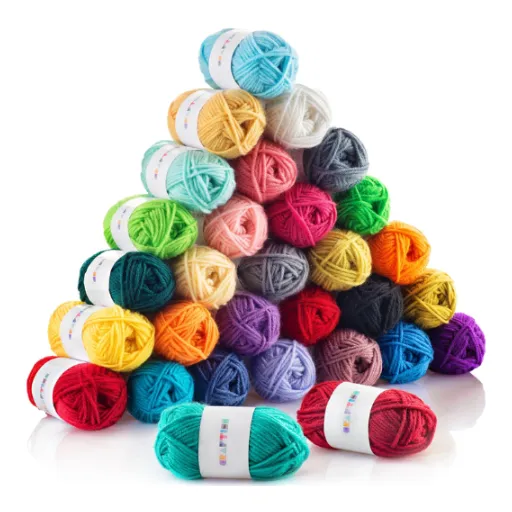
- Choose Skin-Friendly Materials: Opt for hypoallergenic fabrics, such as cotton or bamboo, to minimize skin irritation in children.
- Wash New Items Before Use: Before your child uses them, ensure that you wash any new clothes, blankets, or toys to remove potential irritants, such as dyes or chemicals.
- Monitor Skin Reactions: Check your child’s skin daily for signs of redness, rashes, or dryness. Immediately address these issues by modifying anything that may be causing them or consulting a professional for the child’s care.
- Use Mild Detergents: Wash anything used by the child with a detergent that does not have any perfumes or colors; the skin must not be exposed to harmful chemicals.
- Patch Test When Necessary: Before introducing any new fabrics, test them on a small, less sensitive area of the child’s skin to ensure they will not irritate.
Choosing the Right Acrylic Yarn for Baby Projects
The foremost quality in selecting acrylic yarn for baby projects is softness, safety, and durability. The yarn should be labeled as “baby-friendly” or “hypoallergenic” to ensure it is gentle on tender skin—yarns certified under the Oeko-Tex Standard 100 guarantee that no harmful chemicals were used in their production. Consideration should be given to the yarn being machine washable, as baby items are often used frequently and require regular washing. Additionally, it may be best to use lightweight yarns, such as DK or sport weight, for delicate, breathable apparel that is comfortable for babies. Weighing these features against a variety of colors and textures is what makes acrylic such a good fit for baby projects.
Testing for Sensitivity in Babies
When selecting yarn for baby products, it is essential to test its sensitivity to observe whether it has the potential to irritate the skin. Take a small sample or swatch of the chosen yarn and place it against the baby’s inner arm or wrist, since both are more sensitive areas. Monitoring for redness, itching, or discomfort for the next 24 hours is essential. Parents can also seek advice from a pediatrician, especially if a baby has a history of skin alterations such as eczema. As recent statistics indicate, hypoallergenic and certified non-toxic yarns are the most sought-after by caregivers, underscoring the importance of selecting materials specifically designed for a baby’s delicate skin.
When to Avoid Using Acrylic Yarn
When determining when not to use acrylic yarn, consider the baby’s and project’s requirements. According to the latest search data, caregivers predominantly search for natural fiber alternatives because baby blankets, clothing, and accessories frequently come into contact with the skin. While acrylic is relatively cheap and versatile, it may not be a good choice for babies with extremely sensitive skin or other skin conditions. As a synthetic material, acrylic yarn traps heat and moisture, irritating. Being highly flammable, acrylic yarn may not be suitable for garments that require rigid safety standards. For caregivers who consider the environment, the petroleum-based nature of acrylic raises sustainability and biodegradability concerns, prompting them to consider organic or eco-friendly yarn options instead. Here, the choice of natural fibers, such as cotton, bamboo, or merino wool, can strike a balance between comfort, health, and environmental responsibility.
Care Instructions for Baby Items
Proper care of handmade baby items ensures their longevity, keeps them soft, and makes them safe to use. Natural fibers, such as cotton or merino wool, should be treated with gentle washing, as improperly treated fibers tend to shrink or become damaged. The general recommendation includes gentle hand washing in lukewarm water with a fragrance-free, baby-safe detergent. If unsure, one can check the label; washing may be done in a machine on a gentle or delicate cycle. After washing, it is best to dry the items flat in the air to help retain their shape and texture. For acrylic or synthetic fibers, a machine wash in a gentle cycle and tumble drying on a low heat setting should be sufficient. However, it is always recommended to follow the specific instructions on the care label. Never use harsh chemicals such as bleach or fabric softeners, as these may irritate a baby’s sensitive skin. A baby item cared for properly will last longer and also ensure the baby’s safety and comfort.
Common Questions and Answers

Q: How often should baby clothes be washed?
A: Baby clothes ought to be washed after every use, especially such things as bodysuits and bibs that come into contact with food, spit-up, or bodily fluids. Wash jackets or blankets less frequently unless they get soiled.
Q: What detergent is best for washing baby clothes?
A: Go for a detergent that is hypoallergenic and free of dyes or fragrances. Most detergents marketed as being for babies will have a very mild formula that suits sensitive skin.
Q: Can baby clothes be washed with adult laundry?
A: They can be washed together so long as both sets of clothing are cleaned with baby-safe, gentle detergent. But when adult clothes get heavily soiled, it’s safest to keep baby items separate to prevent contamination.
Q: How do I remove stains from baby clothes?
A: Pre-treat stains with a mild, baby-safe stain remover or a little bit of liquid detergent. Gently rub the affected area and wash it right away. If stains remain, soak the garment in cold water and try cleaning again.
Is Acrylic Yarn Hypoallergenic?
Generally, acrylic yarn is considered hypoallergenic because it is synthetic and lacks the usual common allergens found in wool or animal fur. Yet, it is also worth noting that hypersensitive situations can vary from one individual to another. Some people might develop irritations or have reactions against specific chemical treatments used on acrylic yarn during its manufacturing process. To avoid potential problems, it is advisable to wash the item made of acrylic yarn before use, and to choose reputable brands that disclose their production methods.
Can Acrylic Yarn Cause Overheating?
Acrylic yarn has the potential to keep one warm in warm climatic conditions or during extended use. While natural fibers such as cotton and wool release heat to the surroundings, acrylic yarn retains it due to its synthetic nature, thus having less breathability. This lack of breathability makes acrylic garments feel warm when set against those made from natural fibers. According to recent observations, this has led to a high level of concern among users about the heat retention qualities of acrylic yarn, especially for winter clothing items or thick blankets. If overheating persists, consider using blended yarns or lightweight acrylic varieties, which may provide better airflow.
How to Determine Yarn Safety for Babies
When evaluating yarn suitability for babies, I consider several key factors. It is beneficial to label the yarn as “baby-safe” or “hypoallergenic,” thereby reducing the risk of skin irritation. I try to look for soft, breathable, and lightweight fiber alternatives, avoiding wool or anything that would cause allergies. Any loose fibers from shedding, even to an extreme extent, would pose a choking hazard, so minimizing shedding is preferable. Additionally, I find easy care guidelines helpful because baby items are washed frequently.
Frequently Asked Questions (FAQs)
| Question | Answer |
|---|---|
| What are the benefits of using acrylic yarn for babies? | Acrylic yarn is generally considered a safe and practical option for baby items. It is soft and gentle on the skin, making it perfect for baby garments and blankets. Additionally, modern acrylic yarns are designed to be machine washable, ensuring easy care for busy parents. |
| Can babies with sensitive skin use acrylic yarn? | Acrylic yarn is hypoallergenic, making it less likely to cause allergic reactions in babies with sensitive skin. While some may prefer natural fibers like cotton or bamboo yarn, acrylic remains a strong contender due to its softness and ease of care. |
| What types of projects can I make with acrylic yarn for babies? | Acrylic yarn is versatile and can be used for a variety of baby projects, including blankets, hats, booties, and toys. Its durability ensures that items can withstand frequent washing without losing their shape or softness. |
| How do I care for baby items made from acrylic yarn? | When washing baby items made from acrylic yarn, it’s recommended to use cold water and a gentle detergent. Following proper washing instructions will help maintain the integrity of the yarn and keep the items soft and comfortable for your baby. |
| Is acrylic yarn suitable for baby accessories? | Yes, acrylic yarn is suitable for baby accessories. Its softness, combined with its hypoallergenic properties, makes it a safe choice for creating items such as headbands, blankets, and other baby essentials. |
| What should I consider when choosing the best yarn for baby projects? | When selecting the best yarn for baby projects, consider factors such as softness, ease of care, and safety. Acrylic yarn offers a practical option, particularly for those seeking a machine-washable and durable material. |
| Are there any drawbacks to using acrylic yarn for baby items? | While acrylic yarn is generally a safe option, some may find it slightly scratchy compared to natural fibers like cotton or bamboo. It’s essential to choose high-quality acrylic yarn to ensure a soft feel for baby items. |
| Can I mix acrylic yarn with other types of yarn? | Yes, mixing acrylic yarn with other types of yarn, such as cotton or bamboo, can enhance the properties of your projects. This combination can create a unique texture while maintaining the softness and practicality required for baby items. |
Reference Sources
Here are three professional and authoritative sources discussing the safety of acrylic yarn for babies:
Is Acrylic Yarn Safe for Babies? What Parents Should Know
The document highlights that many yarn manufacturers produce acrylic yarns labeled “baby-safe,” as these are intended to be softer and gentler for a baby’s skin.
Bernat Blanket Yarn Care Instructions
The material reviews the durability of acrylic yarn and its reduced maintenance compared to natural fibers, recommending its use in baby items.
Bernat Pipsqueak Yarn
The content of this paper presents a description of acrylic yarn as being safe for delicate baby skin, suitable for baby garments and projects.








